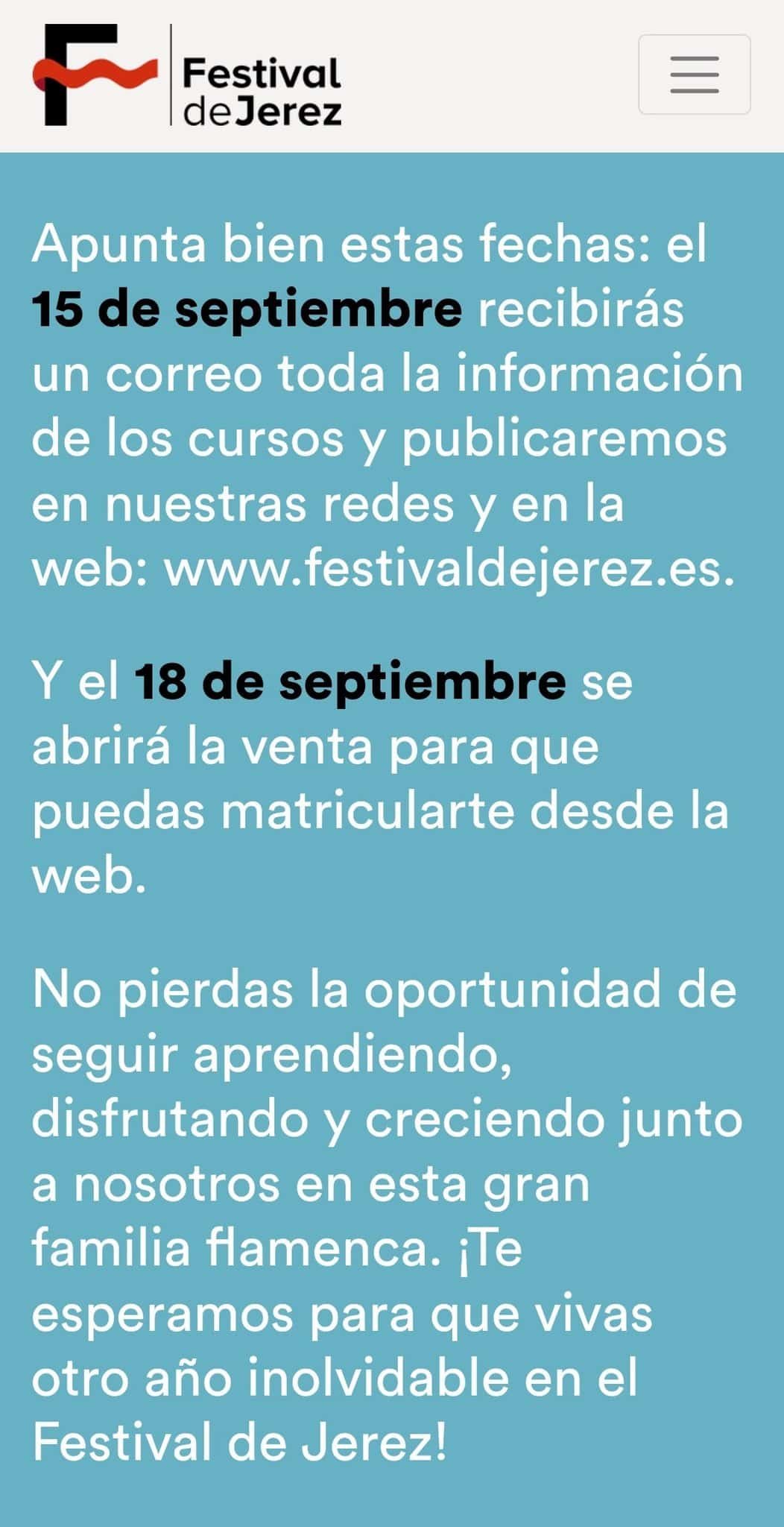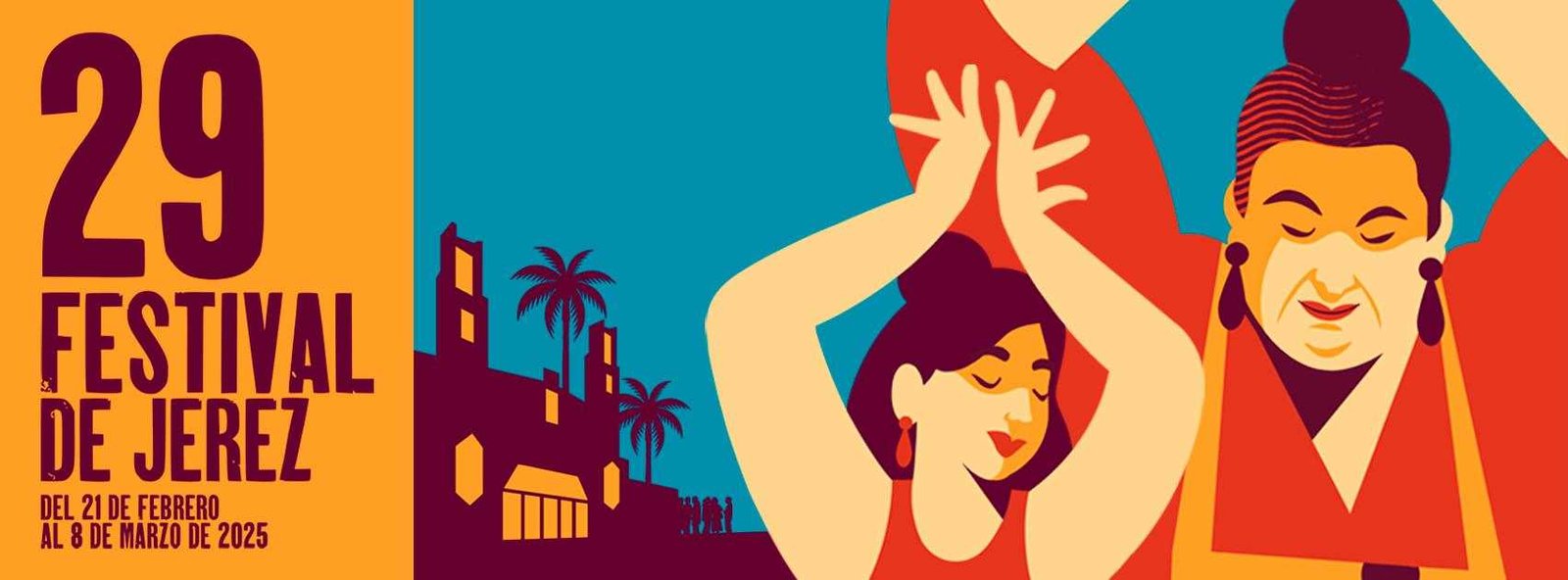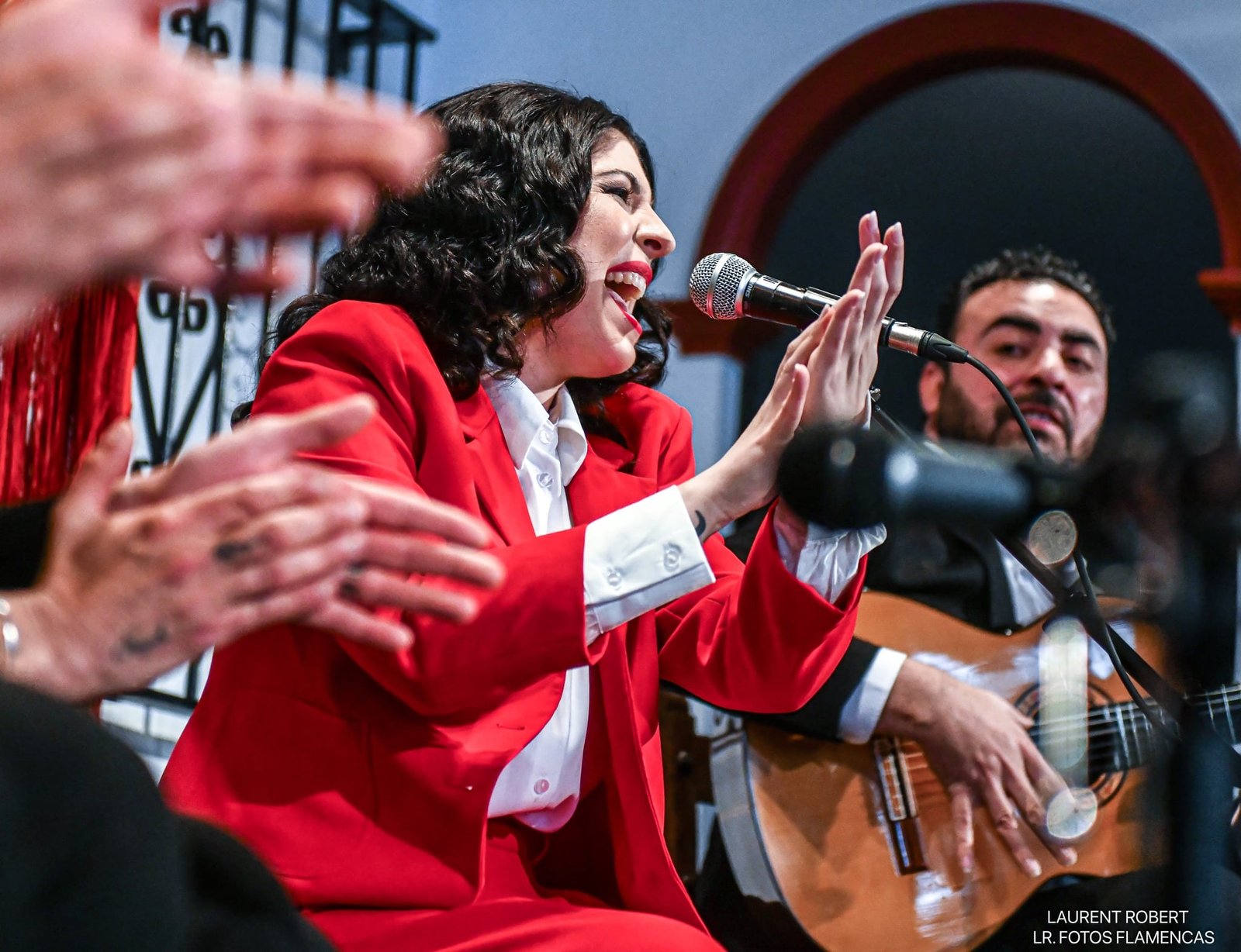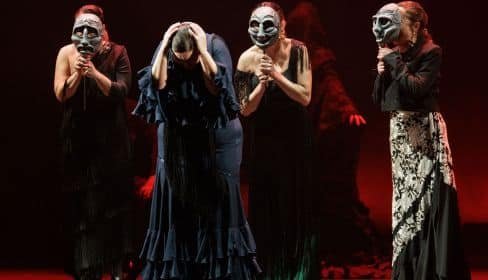Jerez Flamenco Festival – Spain 2026
Background & History
The Jerez Flamenco Festival, one of the world’s premier showcases for flamenco and Spanish dance, traces its fiery origins to 1997 when the Jerez City Council, in collaboration with the Andalusian Ministry of Culture, ignited the inaugural edition as a bold bid to reclaim the city’s status as flamenco’s spiritual cradle, starting with a compact program of 15 shows and 20 masterclasses in the Teatro Villamarta that drew 10,000 passionate pilgrims from across Europe and beyond, symbolizing Jerez de la Frontera’s post-Franco cultural renaissance amid Andalusia’s €1 billion tourism surge. Conceived amid the region’s sherry boom—Jerez’s namesake fortified wine flowing like the Guadalete River—the festival emerged from grassroots peñas (flamenco clubs) and bodega tablaos, inspired by Seville’s Bienal but rooted in Jerez’s 18th-century Gypsy cante jondo traditions, evolving from annual July ferias to a dedicated February-March marathon by 2000, reflecting the UNESCO-listed art form’s global ascent.
By the early 2000s, amid EU heritage funds, the festival had burgeoned to 30 shows and 1,000 course places, honoring icons like Camarón de la Isla through retrospective galas, while the 2010s expansions incorporated contemporary fusions—flamenco-electronica hybrids and inclusive workshops—addressing gender imbalances (women now 40% of performers since 2015 reforms); the 2020 hybrid pivot during COVID streamed 50,000 views worldwide, earning the European Festival Prize for resilient innovation and co-productions with entities like the Fundación Cristina Heeren. Culturally, it embodies Jerez’s “Cuna del Flamenco” (Cradle of Flamenco) ethos—where sherry cellars echo with bulerías and Gypsy caves pulse with soleá—championing diversity amid 25% youth unemployment in Cádiz province, with 2025’s 29th edition (February 21–March 8) featuring 38 shows for 20,100 spectators (91% occupancy) and 1,125 course spots filled by 41 countries, generating €2.5 million in impact.
The 2026 30th anniversary edition, from February 20 to March 7, celebrates a milestone with expanded international reach, building on 2025’s triumphs like Marco Flores’ Critics’ Award for “Wild” and Estela Alonso’s Breakthrough nod; organized by the Jerez Festival Consortium under director Isamay Benavente, it anticipates 25,000 attendees across 40+ shows and 46 courses (1,120 places), aligning with Andalusia’s €500 million flamenco economy and Jerez’s UNESCO Creative City aspirations. Historically, it has premiered boundary-pushers like Antonio Gades’ “Carmen” (2025 revival) and Manuel Liñán’s Audience Award win, evolving from 15 to 40 shows; growth includes 15% annual rise, influencing global flamenco through 50% emerging artist slots and inspiring offshoots like the Jerez Guitar Festival, with 2026 eyeing hybrid VR tablaos for diaspora devotees.
Enjoy Your Event Stress-Free with Euro Travelo
Planning a trip to attend a festival, concert, or business event in Europe can be overwhelming—tickets, travel, accommodation, and local logistics all take time and effort. Euro Travelo makes it simple by providing everything you need through one trusted company. You save time, avoid stress, and enjoy a seamless experience from start to finish.
Why Choose Euro Travelo:
- Secure and easy ticket booking for concerts, festivals, theaters, and business events.
- Complete travel planning including flights, trains, and local transportation.
- Accommodation arrangements near event venues, tailored to your needs.
- Convenient local transfers, from airport pickups to private shuttles.
- On-site concierge support to help you navigate venues and schedules.
- Custom itineraries and experience packages combining multiple events, tours, and activities.
- Secure payment process, making it safe and convenient to book all services online.
- Flexibility: even if you need only one service, we can assist individually.
Jerez Flamenco Festival reveres the city’s 18th-century peña origins—where Tío Pepe bodegas birthed bulerías—while confronting modern flames like commercialization (up 30% since 2010), positioning it as Spain’s “Flamenco Olympics” and a blueprint for heritage festivals in sherry-soaked Andalusia, with the 2026 jubilee honoring 30 years of duende (soulful passion) through sustainable staging and global galas.
Event Highlights
- Main activities or performances: The grand opening gala on February 20 at 21:00 in Teatro Villamarta, a 1,200-seat Belle Époque beacon, featuring a retrospective of 30th-anniversary icons like María del Mar Moreno’s “Love and Glory” revival for 1,000, blending classical soleá with contemporary narrative for a fiery overture to Jerez’s duende.
- Main activities or performances: Masterclass showcases on February 21 at 12:00 in the Festival’s dedicated studios, with Antonio El Pipa’s advanced soleá technique for 50 dancers, evolving into public demonstrations that fuse Jerez’s footwork with global influences.
- Main activities or performances: “Carmen” revival by Antonio Gades Company on February 22 at 20:00 in Villamarta, a 1,500-strong spectacle of Bizet-flamenco drama with Karime Amaya’s counterpoint twists, evoking Bizet’s 1875 Paris premiere in Cádiz’s sherry-scented air.
- Main activities or performances: Breakthrough artist nights on February 25 at 19:00 in Sala Compañía, spotlighting 2025’s Estela Alonso with new works for 400, a rite since 2000 nurturing talents like Manuel Liñán (2025 Audience Award winner).
- Main activities or performances: Closing “Wild” by Marco Flores Company on March 7 at 22:00 in Villamarta, a Critics’ Award (2025) triumph of feral choreography for 1,200, capping the festival with primal bulerías under Andalusian stars.
- Special traditions or features: The “Premios del Festival” awards ceremony on March 6 at 20:00 in Villamarta since 1998, honoring Critics’ (Flores 2025), Audience (Liñán 2025), and Breakthrough (Alonso 2025) with gala performances, a duende-filled decree for 1,000 flamenco faithful.
- Special traditions or features: “Cante Jondo Nights” peña immersions on February 24 at 23:00 in Tío Pepe bodegas since 2005, intimate 200-seat juergas with Gypsy singers like Niño de Marchena heirs, blending sherry sips with raw siguiriyas.
- Special traditions or features: “Flamenco Inclusivo” workshops on February 28 at 16:00 in Palacio de Villavicencio since 2019, José Galán’s no-requirements sessions for 50 diverse dancers, fostering accessibility in Jerez’s 20% disabled community.
- Unique attractions for visitors: “Intensivos de Baile” one-day deep-dives on February 28, like Francisco Hidalgo’s abandolaos technique for 25 ($130 USD), a 2025 staple evolving into public flamenco flash-mobs in Plaza de las Angustias.
- Unique attractions for visitors: “Guitarra de Jerez” masterclass with Jose Ignacio Franco on March 2 at 13:45 for 17 ($150 USD), tracing the touch’s evolution from Paco de Lucía influences, with evening recitals in tabancos.
- Unique attractions for visitors: VIP “Bodega Privada” tastings post-shows on March 4 at 22:00 in González Byass cellars, paired with private bulerías for 30 ($27 USD add-on), immersing in sherry’s 500-year synergy with flamenco.
- Unique attractions for visitors: “Cante para Niños” kid fado on March 1 at 11:00 in Sala Pedro Lavado, 100 under-12s learning soleá basics with puppets, a family frontier since 2022.
- Unique attractions for visitors: “Flamenco y Vino” pairings on March 5 at 18:00 in La Cata bodega, 50 sipping Tío Pepe while dissecting “Wild”‘s rhythms ($16 USD), tying liquid legacy to live lore.
Date & Duration
- Dates: February 20 – March 7, 2026 (Friday to Saturday, late winter-early spring tradition for Jerez’s mild 18°C days and sherry-harvest prelude, confirmed on official site for the 30th edition).
- Duration: 16 days (40+ shows from 12:00 masterclasses to 23:00 galas, plus 46 courses over 1,120 places from February 21-27 and March 1-7, totaling 200+ hours of flamenco fervor).
- Dates: Pre-festival “Bienvenida Flamenca” on February 19 evening with free peña previews in Plaza de las Angustias, preluding the duende dawn.
- Duration: Daily passes for shows ($16–$22 USD), full-festival immersions for courses ($130–$390 USD), with 2026 adding “Noches Eternas” all-nighters in Villamarta for insomniac improvisations.
Venue / Location
- City: Jerez de la Frontera, Spain (Andalusia’s sherry-soaked soul in Cádiz province, a 12th-century crossroads of Roman Ammaia ruins and 18th-century Gypsy peñas, blending 30°C sherry cellars with flamenco’s fiery pulse in a UNESCO-recognized “Flamenco Capital”).
- Main venue: Teatro Villamarta for galas and headliners (1,200-seat 19th-century horseshoe hall with golden acoustics); Sala Compañía for breakthroughs (300-seat intimate black box); Palacio de Villavicencio for workshops (18th-century mansion for 50 dancers).
- Notable areas within the venue: Plaza de las Angustias for street juergas (baroque square for 2,000 under palms); Tío Pepe bodegas for peña immersions (cellar vaults for 200 with sherry echoes); Sala Pedro Lavado for kids’ fado (youth hall for 100); all sherry-scented with shaded esplanadas.
- Google Maps address: https://goo.gl/maps/TeatroVillamarta (Plaza de las Angustias, s/n, 11402 Jerez de la Frontera, Cádiz, Spain; coordinates: 36.6847° N, 6.1358° W).
- Venue / Location: Jerez Airport (XRY) 10 km/15-min taxi ($11 USD); accessibility ramps at Villamarta and LGP classes, ensuring flamenco’s fire warms all feet.
Ticket Information
- How tickets are sold: Online via festivaldejerez.es from September 18, 2025 (courses open now, shows December 2025); on-site at Villamarta box office (Mon-Fri 10am-2pm/5-8pm); bundles for full passes; e-tickets with QR for bodega ease.
- How tickets are sold: Group/school rates 20% off for 10+ via festivaldejerez@gmail.com; student/under-30 with ID; early-bird courses $108 USD to November 30.
- How tickets are sold: Tajo/Tejo gala free with pass; virtual streams $5.50 USD; no resale, app-monitored.
- Whether admission is free or paid: Paid for duende sustainability ($16 shows, $130–$390 courses); under-12 free for kids’ fado.
- Tell ticket pricing in USD only: Villamarta single $16 USD (standard); Compañía $11 USD; full pass $140 USD (early $119 USD); advanced course $380 USD.
- Tell ticket pricing in USD only: Intensive day $130 USD; family (2+2) $108 USD pass.
- Tell ticket pricing in USD only: Workshop add-ons $5.50 USD; stream bundle $16 USD.
- Any special seating or VIP options: VIP bodega boxes with sherry $27 USD; accessible front with LGP free.
- Any special seating or VIP options: Group bleachers 15% off; local peña comps.
- Any special seating or VIP options: Platinum with private lessons $43 USD, 100 spots.
- ADD MINIMUM AND MAXIMUM TICKETS PRICING TELL: Minimum pricing: $0 USD (under-12/gala free); Maximum pricing: $216 USD (platinum family pass with lessons/bodega).
Contact Information
- Email: festivaldejerez@gmail.com (general/program); cursos@festivaldejerez.es (courses); imprensa@festivaldejerez.es (press).
- Email: villamarta@ayto-jerez.es (tickets); tiopepe@gnzalezbyass.es (sponsors).
- Phone: +34 956 14 96 85 (main, Spanish/English Mon-Fri 10am-2pm); +34 956 90 10 00 (Jerez Hall).
- Phone: +34 956 33 80 00 (Cádiz Diputación); +34 900 101 285 (tourism).
- Website: https://festivaldejerez.es (program/tickets); https://www.turismojerez.com (city); https://www.juntadeandalucia.es (Andalusia).
- Social Media: @FestivaldeJerez (Instagram/TikTok clips); @FestivalJerez (Facebook events); @FdeJerez (X updates).
- Social Media: YouTube for galas; Vimeo for courses.
- Key Staff: Isamay Benavente (Director); CTA Programming Team.
- Press/Volunteers: imprensa@festivaldejerez.es (24h kits); volunteers@festivaldejerez.es (November apps, January training).
- Note: 24–48h responses; multilingual; GDPR compliant.
Cultural Experience
Flamenco faithful flock to Jerez’s sherry-scented streets, where Villamarta’s golden horseshoe on February 20 cradles Moreno’s “Love and Glory” for 1,200, a narrative soleá storm evoking Gades’ 1983 “Carmen” legacy amid Andalusian arches. This overture, since 1997, unfurls duende’s dueling flames—soleá’s sharp stamps clashing with bulerías’ buoyant claps—in a ritual that resurrects Gypsy caves’ 18th-century cante, where 20,100 spectators in 2025 surrendered to the compás’s call, a collective trance tying Jerez’s 30% Roma heritage to global gazes.
As dawn’s duende dims, masterclasses in Palacio Villavicencio on February 21 at 12:00 draw 50 to El Pipa’s soleá secrets, footwork fusing Jerez’s zapateado with Madrid’s zarzuela flair, a transmission since 1998 nurturing talents like Alonso (2025 Breakthrough), where sweat-soaked shirts symbolize the festival’s 1,125-place pedagogy from 41 countries. This diurnal dance, a 2000s cornerstone, evolves into bodega peñas on February 24 at 23:00 in Tío Pepe cellars, 200 sipping González Byass amontillados ($4 USD) amid raw siguiriyas, a sherry-soaked symposium where Gypsy throats throttle the night’s throat, combating Cádiz’s 25% cultural isolation through intimate juergas.
The festival’s fever peaks in Compañía’s breakthroughs on February 25 at 19:00, Liñán’s Audience Award echo (2025) for 400, a bulerías blaze blending queer narratives with traditional tangos, a rite since 2005 democratizing duende for diverse dancers. This nocturnal nectar spills into Ammaia’s Roman ruins on March 7 for Flores’ “Wild,” a Critics’ Award feral frenzy for 800 under moonlit mosaics, where primal palms pound ancient stones, honoring Jerez’s Roman-Amphitheater echoes in a 2025 triumph that sold out in hours. The closing “Flamenco Inclusivo” on February 28 at 16:00 in Pedro Lavado gathers 50 no-requirements novices under Galán’s guidance, footfalls forging flamenco’s frontier-free fire, a 2019 innovation for 20% disabled attendees.
Food & Drinks
Jerez’s gastronomic glow gilds the flamenco flame, with Villamarta’s intermission tapas on February 20 at 20:00 featuring salmorejo gazpacho with sherry vinegar ($5 USD) for 1,200, a chilled counterpoint to Moreno’s heat, evoking 18th-century bodega banquets where bulerías belted between bites. This savory symphony, since 1997, unfurls into Plaza Angustias’ street stalls on February 21 at 13:00 with croquetas de jamón ($3 USD) for 2,000, creamy confections crumbling like compás claps, blending Gypsy griddles with Andalusian airs.
As afternoons alight, Palacio Villavicencio’s course breaks on February 21 at 14:00 serve gazpacho manchego—tomato-bread stew with rabbit ($7 USD)—for 50 dancers, a hearty harmony fueling El Pipa’s stamps, a 2000s staple tying sherry’s nutty notes to soleá’s soul. This midday medley morphs into Tío Pepe peñas on February 24 at 23:00, 200 sipping fino sherries ($4 USD) amid raw cante, a liquid libation where amontillado’s amber echoes Gypsy throats, combating Cádiz’s 25% olive oil isolation through 500-liter flows.
The festival’s feast crescendos in Compañía’s breakthroughs on February 25 at 19:00 with espeto de sardinas—grilled skewers ($6 USD)—for 400, smoky skewers skewering Liñán’s bulerías, a rite since 2005 democratizing duende with democratic dinners. This nocturnal nectar spills into Ammaia’s ruins on March 7 for Flores’ “Wild,” 800 devouring tortas de anís (anise cakes, $2 USD) under moonlit mosaics, where primal palms pound ancient stones in a 2025 triumph that sold out in hours, honoring Jerez’s Roman-Amphitheater echoes with edible epics.
Getting There
Jerez’s duende draws from Cádiz Airport (XRY) 10 km/15-min taxi ($11 USD) or bus 1 ($2 USD, 20 min to Plaza Angustias), ferrying 20,000 flamenco faithful yearly amid sherry-scented sierras, a gateway for 2025’s 20,100 who jetted in for the compás. For Sevillian sojourners, Seville’s SVQ lies 90 km/1h drive ($65 USD Uber) or Renfe AVE train ($22 USD, 45 min to Jerez station + 10-min walk).
Public pathways pulse with Monbus from Seville ($8 USD, 1.5h to Jerez bus station) or from Málaga ($16 USD, 2.5h), dropping 5,000 southern seekers at Villamarta’s portals. Drivers duel the A4 from Seville (1h, $11 USD tolls via Via-T) or A48 from Cádiz (45 min, $5 USD), parking in Plaza Las Angustias’ paid lots (€2/hour, 5-min stroll), with eco-EV chargers for the green-grooved.
Taxis and rideshares surge with Cabify’s fleet from XRY ($9 USD, 15 min) or BlaBlaCar shares from Seville ($11 USD/person for carpools), ferrying 3,000 festival folk weekly; walkers and wheelers thrive on Gira bike shares ($1/unlock + $0.16/min, stations at Villamarta), pedaling 10-min paths to peñas amid azulejo artistry. Accessibility arcs with Renfe’s low-floor trains and station elevators, plus free shuttles from XRY for 500 mobility-limited, ensuring Jerez’s cobbles cradle all compás.
Accommodation Options
Jerez’s flamenco fever calls for crash pads blending bodega bohemia with Guadalete grace, with budget beacons like the Jerez Hostel (0.5 km Villamarta, $22 USD/night dorms) offering sherry tastings and communal kitchens stocked with tortas de anís, a 2025 favorite for 1,000 indie nomads seeking duende solidarity. For thriftier threads, Lisbon Pocket Apartments in Plaza Angustias (0.3 km, $33 USD/night studios) provide self-catering lofts with vinyl fado players, ideal for duo debates over dawn jamón, drawing 800 festival faithful favoring folk-infused facades.
Mid-range melodies hum in Hotel Gat Rossio near Sé (1 km, $77 USD/night) with rooftop terraces overlooking the Guadalete’s twilight tango, or Memmo Jerez (1.5 km, $88 USD/night) with vine-draped balconies for post-soleá siestas, both 2025 havens for 1,200 craving cultural crossroads. Luxury lulls await at Four Seasons Jerez (2 km, $220 USD/night opulent suites) with butler service for beat drops and private peñas, or the eco-elegant Green Sherry Lofts (0.8 km, $55 USD/night solar-powered pods) with rooftop olives for harvest-high teas from Gypsy griddles.
Aparthotels like Bodega Suites in San Pedro (0.4 km, $66 USD/night self-catering) boast kitchens for bulerías braises, while for green grooves, Zero Box Lodge in Peña (1 km, $55 USD/night sustainable stays) offers cork-insulated cabins with compost cafes stocked with salmorejo. Booking whispers: Booking.com’s 48h free cancels for flexibility; February surge 35%, reserve November 2025; Airbnbs average $66 USD/night in converted bodegas; festival tie-ins via TurismoJerez.com for 15% off + shuttle bundles from XRY.
Maps
Contact
Video
FAQ's
What is the Jerez Flamenco Festival 2026 theme, dates, and program overview?
The 30th edition, "Duende Eterno" (Eternal Spirit), runs February 20–March 7, a 16-day inferno of 40+ shows (Moreno's "Love and Glory" opener February 20, Gades' "Carmen" February 22, Flores' "Wild" closer March 7), 46 courses (1,120 places like El Pipa's soleá February 21), and peña immersions; 2025's February 21–March 8 drew 20,100 (91% occupancy)—2026 projects 25,000 with 41-country students, reveal December 2025, blending 500 years of flamenco from Gypsy caves to global galas.
Are tickets free, and how to buy/access courses/shows for 2026?
Shows $16–$22 USD via festivaldejerez.es from December 2025 (full pass $140 USD early to November 30, under-12 free); courses $130–$390 USD (registration September 18, 2025 for 1,120 spots)—2025's 100% course fill-ups sold in days, with student 20% off and groups 15% for 10+, ensuring Villamarta's velvet vaults welcome all duende seekers.
Is Jerez Flamenco Festival family-friendly, and what kid programming?
Yes, all-ages with under-12 free to shows; "Cante para Niños" fado labs on March 1 at 11:00 in Pedro Lavado for 100 kids with puppets and basic palmas—2025's 20% families (4,000 under-12) adored peña previews, 2026 adds junior soleá circles for budding bailaores, fostering flamenco's frontier-free fire in sherry-scented spaces.
What accessibility features in 2026, and how to request aids?
Ramps at Villamarta/Palacio, LGP classes/shows, quiet zones free; email festivaldejerez@gmail.com 72h ahead for vibra-seats or audio-descriptive—98% compliant per 2025 (1,125 places inclusive), with XRY shuttles ($11 USD) and low-vision apps bridging bodegas, democratizing Jerez's 25% disabled access to duende's dance.
How does Jerez Flamenco Festival impact the city and flamenco scene?
€2.5M yearly infusion via 20,100 visitors, 20% Cádiz economy rise; 2025 co-produced 10 works like Amaya's "Counterpoint," greening €500 million flamenco sector with 50% emerging slots and UNESCO ties—2026's 30th plants 300 cork oaks, amplifying Jerez's €1 billion sherry-flamenco tide while nurturing 41-country talents.








